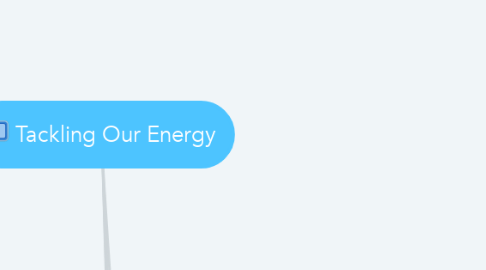
1. Sustainable Supply Chain
1.1. Supply Chain 2.0 Relationships
1.1.1. Understand what Supplier/Subs current state is / movement to future state
1.1.2. Ask/filter Vendors for Carbon footprint info/pricing on options
1.1.3. Gain understanding of Engineering houses view to sustainable practices in Specs/Procurement
1.1.4. Provide Owners with options based on low cost and low carbon footprint
1.1.4.1. Understand/monitor Client current state wrt sustainability initiatives, industry focuses
1.1.4.1.1. Collect a yearly Industry Clent survey
1.1.5. Add Carbon Specialist to Procurement
1.2. Supply Chain 2.0 Mat/Equip/Tools
1.2.1. Break down typical industrial build into discrete components and determine lowest footprint options
1.2.1.1. Program to track/compare supply to site distance.
1.2.1.2. utilize subs/vendor programs and carbon accounting
1.2.2. Energy
1.2.3. Materials
1.2.3.1. Material Balances for project Materials - Utilized vs Waste Stream
1.2.3.1.1. Consumables Plan : Cradle to grave/reuse/repair/recycle
1.2.4. Tools
1.2.4.1. Factor for our own rebuild vs purchase of tools and returns
1.2.5. Equipment
1.2.5.1. Account for efforts to repurpose used equipment - sell / auction / gift
1.2.6. Subassemblies
1.2.7. Add Carbon acccounting to final costs
1.3. Localized vs National vs Global Supply Chains
1.3.1. Determine $ Spend averaged for Material/Services?Subs
1.3.2. Work with key suppliers in Project Region/Local - PreMobe List
1.3.3. Provide fully integrated cost comparisions including carbon footprint of shipping volumes of air...
1.3.3.1. Track / Manage LTL and Hot Shot loads
1.3.3.2. Include Space / Weight Utilization on all loads sent out to projects
1.4. Modular Construction
1.4.1. Work wi/Engineers to provide Mod Design / expand applicability to skid/can type installs
1.4.1.1. Develop internal Skid design capability
1.4.2. Consider Carbon balance: where construction done vs where craft are
1.4.2.1. Develop case study to detail savings / manhour
1.4.3. Factor productivity gains of "factory" crews vs jobsite call ins
1.4.3.1. Develop Case Study to use as baseline for discussions with owners
1.4.3.1.1. Market existing Client base
1.4.3.1.2. Develop /Market to new use case Client Base - Ag / Food / Municipal , etc
1.5. External Organizations/Industry Associations - Sustainability Discussions/Focus
1.5.1. Regular meetings with Competitors
1.5.2. Regular meetings with Clients
1.5.2.1. Market Benefits of C/EPC / IPD Carbon Minimized Project Delivery
1.5.3. Regular Meetings with Engineers
2. Building a Skilled Workforce
2.1. 1. Encourage Outside Learning Programs
2.1.1. Posters
2.2. 2. Establish KPIs
2.2.1. # Employees Utilizing Outside Learning
2.2.2. # Employees Completed Leadership Courses
2.3. 3. Grow indigenous partnerships
2.3.1. Develop Indigenous cultural awareness seminar for staff
2.3.2. Indigenous training and employment opportunities
2.4. 4. Promote apprenticeship and workforce development programs
2.4.1. Establish Trade-focused Scholarship / Award
2.4.2. Highlight support of Women Building Futures (WBF) program
2.5. 5. Promote construction careers in schools
2.5.1. Highlight support of University Co-Op programs
2.5.2. Highlight PAS Scholarship
2.5.3. Highlight support of Registered Apprenticeship Program (RAP) in high schools
2.6. 6. Promote diversity & inclusion
2.6.1. Rollout The Predictive Index™ to jobsites
2.6.2. Highlight support of Women Building Futures (WBF) program
2.6.3. Highlight Indigenous employees
2.7. 7. Promote Leadership Training
2.7.1. Promote PCL Leadership Academy
2.7.2. Formalize "Farm Team" as part of field supervisor recruitment
2.7.3. Target individuals for E100 thru E300
3. Enhancing Communities
3.1. Develop a Market Size Analysis
3.1.1. Does it create a Strategy for Growth
3.1.2. Does it create a Strategy for Diversity
3.1.3. Is the Opportunity Client Driven
3.1.4. Does the opportunity require a Local Office
3.1.5. Community Health
3.1.6. Does a Partnership with Local Contractor make sense
3.2. Prioritize Local Suppliers & Contractors
3.2.1. Who is the Service Sub-Contracts
3.2.1.1. Create a scoring system within the bid tab evaluations
3.2.2. Who is the Procurement Wholesalers
3.2.2.1. Procurement to supply Project team with local wholesalers based on national agreement
3.2.3. Who is the local Indigenous
3.2.3.1. Client Driven
3.2.3.1.1. Government Pressures
3.2.3.1.2. Activists
3.2.3.1.3. Publicly Traded
3.2.3.1.4. Their Sustainable Models
3.2.3.2. Build / Supply skilled workforce
3.2.3.3. Do we have a current relationship
3.2.4. Who is the local Sub-Contractors
3.2.4.1. Create a scoring system within the bid tab evaluations
3.3. Understand the Local Community Identity
3.3.1. Anticipate PCL impact on the Community
3.3.2. Develop relationships with community leaders
3.3.3. Develop an understanding what PCL's Current Value is in the Community
3.3.3.1. Should PCL Consider a Local Office
3.3.3.1.1. Build a metric to talk and use this in our pursuits
3.3.3.2. Strategic funding to community
3.3.3.2.1. Education & Training
3.3.3.2.2. Stimutlate Local Workforce
3.3.3.2.3. Philanthropy / Charitable Giving
3.3.3.3. What Infrastructure would be required
3.3.3.3.1. Should PCL Consider this a Remote Work Location
3.3.3.3.2. Is there a local PCL infrastructure
3.3.4. Engage the community in a participatory process
3.3.4.1. Keep communication ongoing and consistent
3.4. How does PCL Care
3.4.1. Create a space for people to view what we currently do for donations
3.4.2. Provide a space for people to apply for donations
3.4.3. Provide a space to represent our Community Awards
4. Business travel
4.1. Establish business travel decision tree
4.2. Formalize business travel carbon accounting
5. Practice 3Rs; Waste diversion, energy minimization, and nautral resource conservaton
5.1. Develop a waste management policy
5.2. Coordinate and reduce travel to site
5.3. Reduce consumables
5.4. Conservation / recycling of hydrotest water
6. Sustainable energy for permanent PCL offices
6.1. Source or generate renewable energy for our administrative buldings
6.1.1. Investigate Providers (i.e. Bullfrog)
6.1.2. Investigate Permanent Installations (i.e. solar)
6.2. Review and upgrade existing buildings to LEED certified buildings
7. Energy Assessment
7.1. Conduct energy assessment of operations
7.1.1. Complete an energy assessment on PCL equipment fleet
7.1.2. Initiate carbon accounting
7.1.2.1. Gather utility bills
7.1.2.2. Install metering devices at the job site
